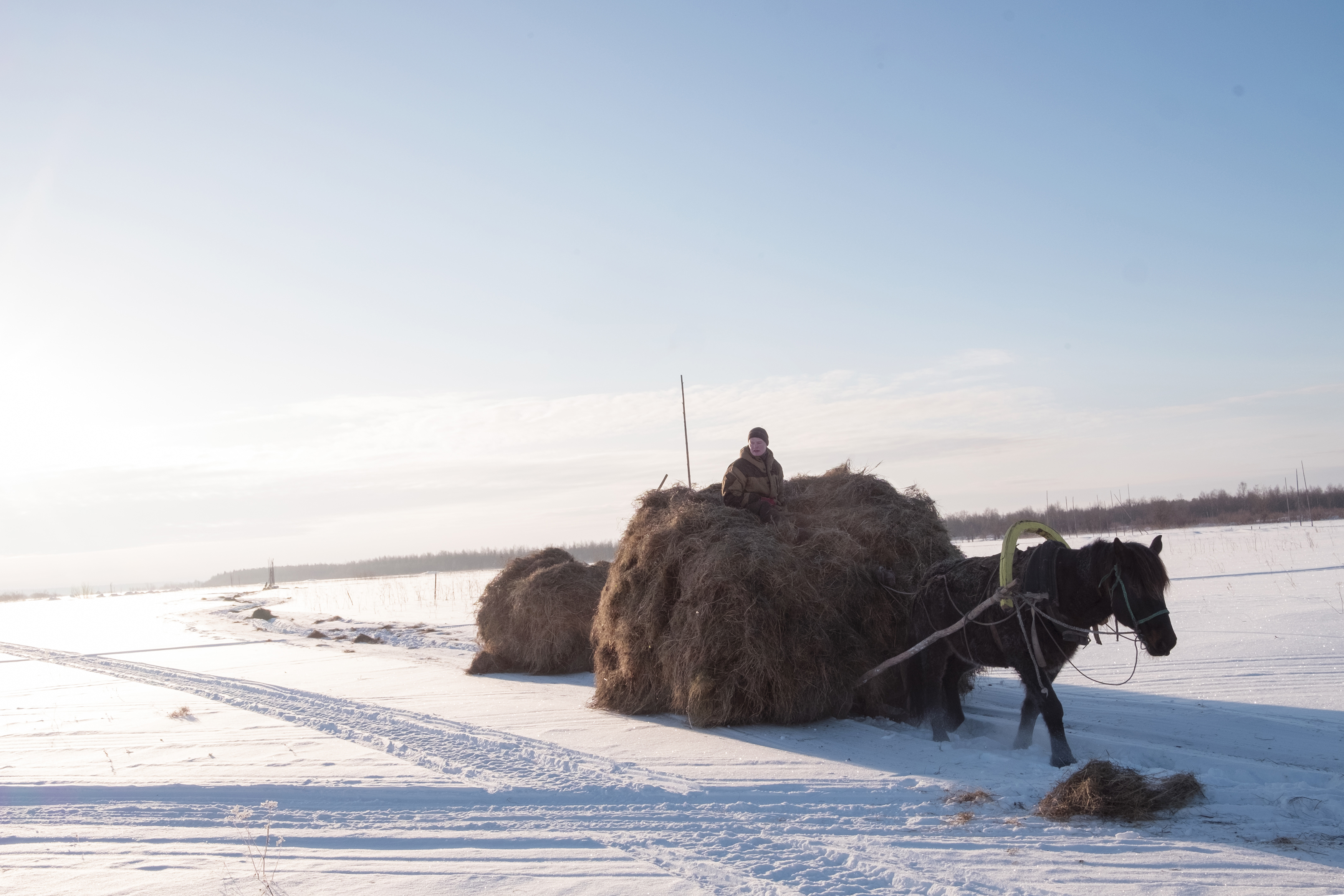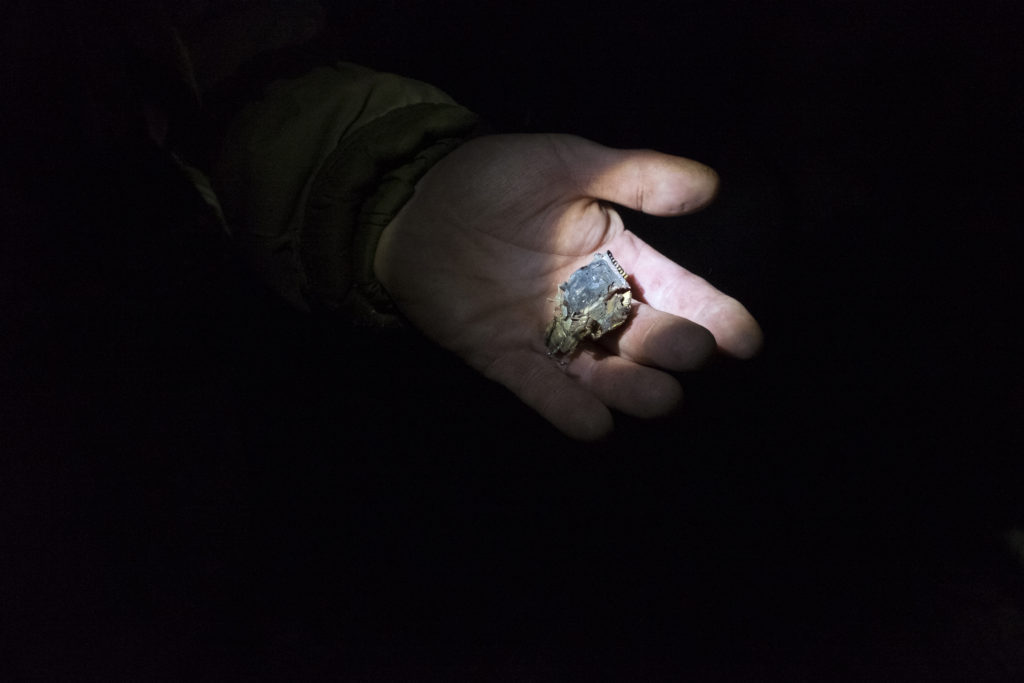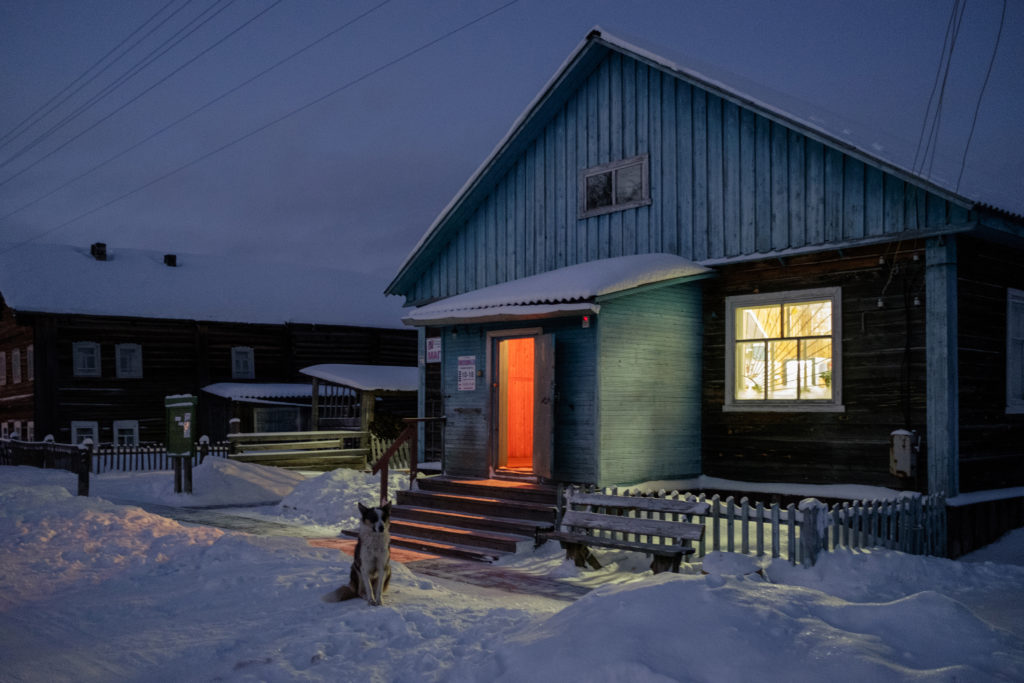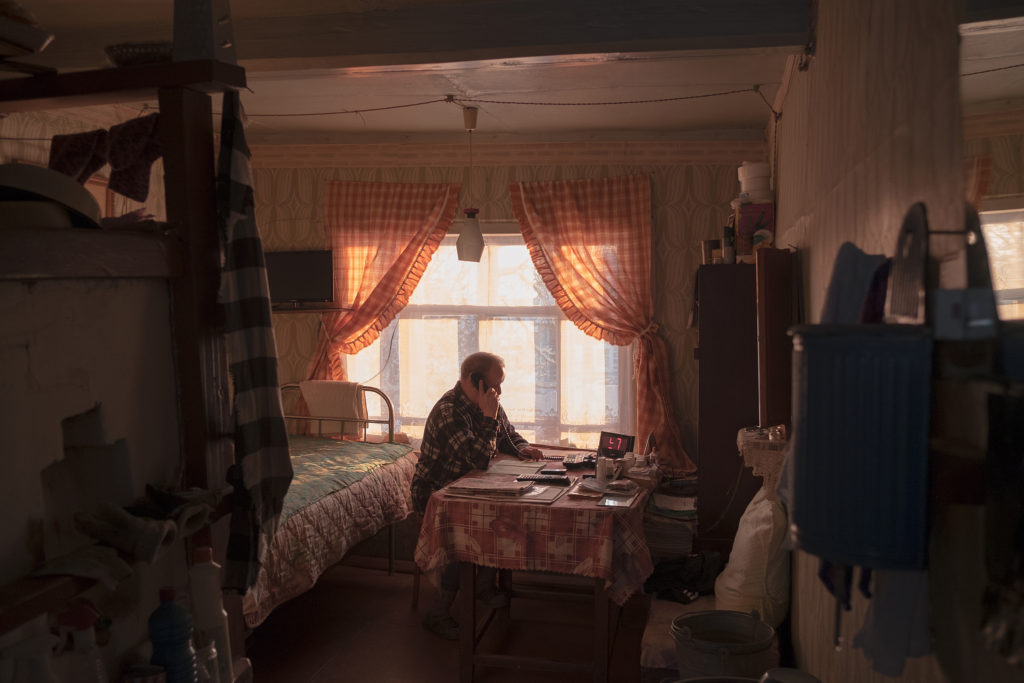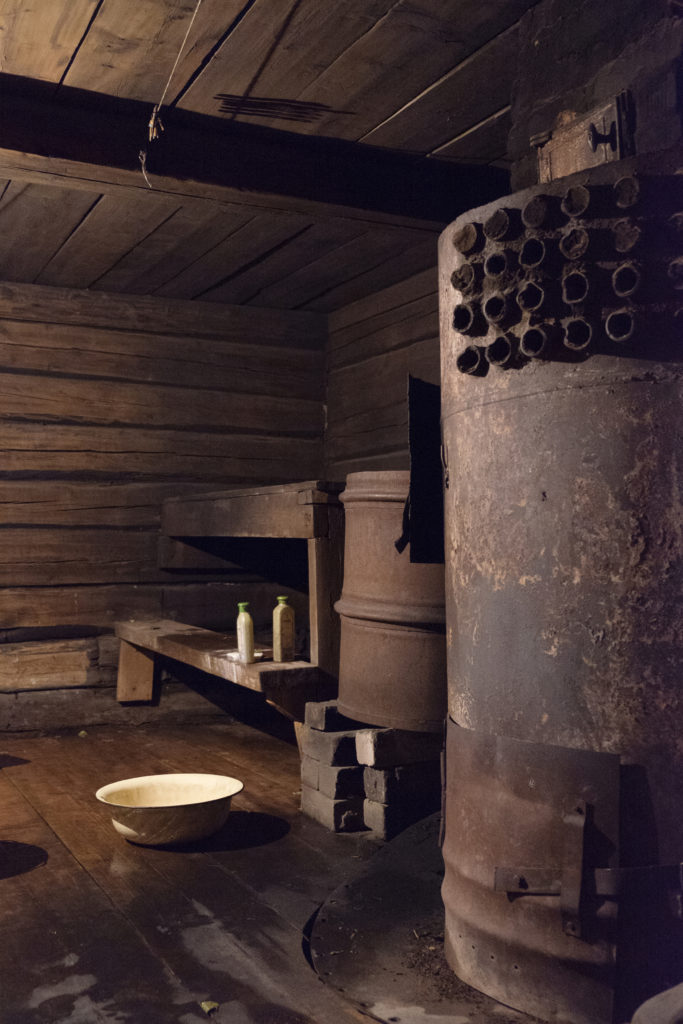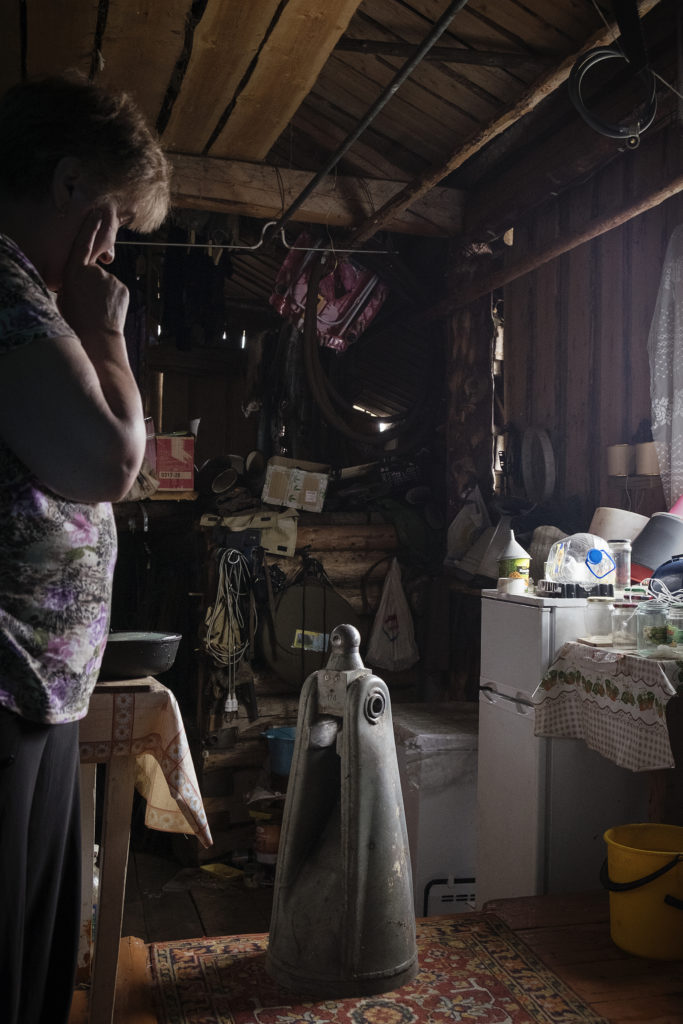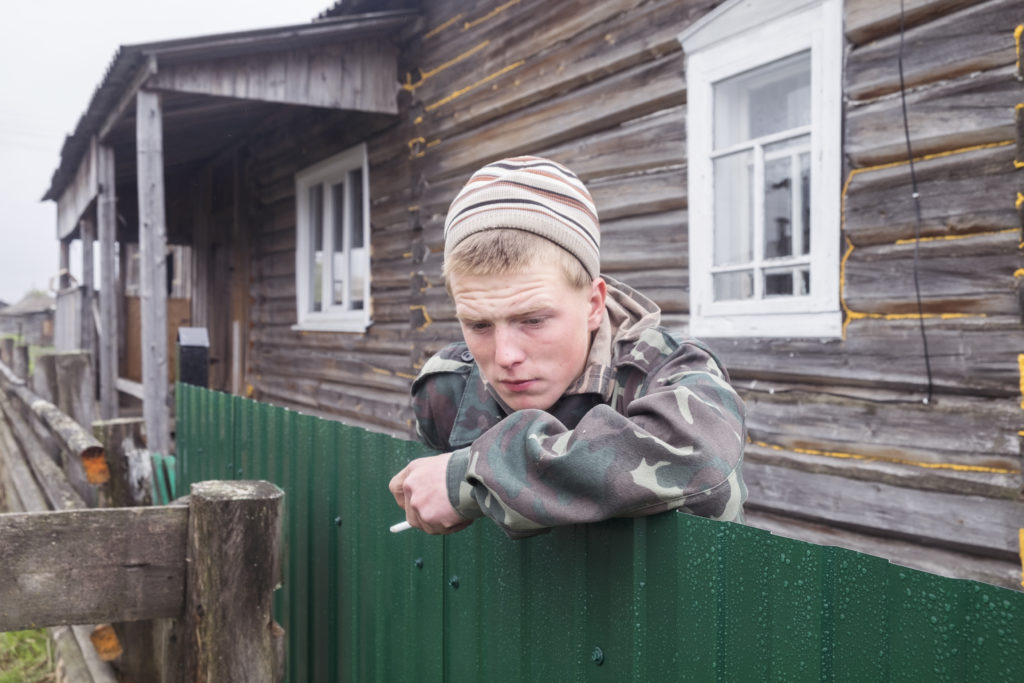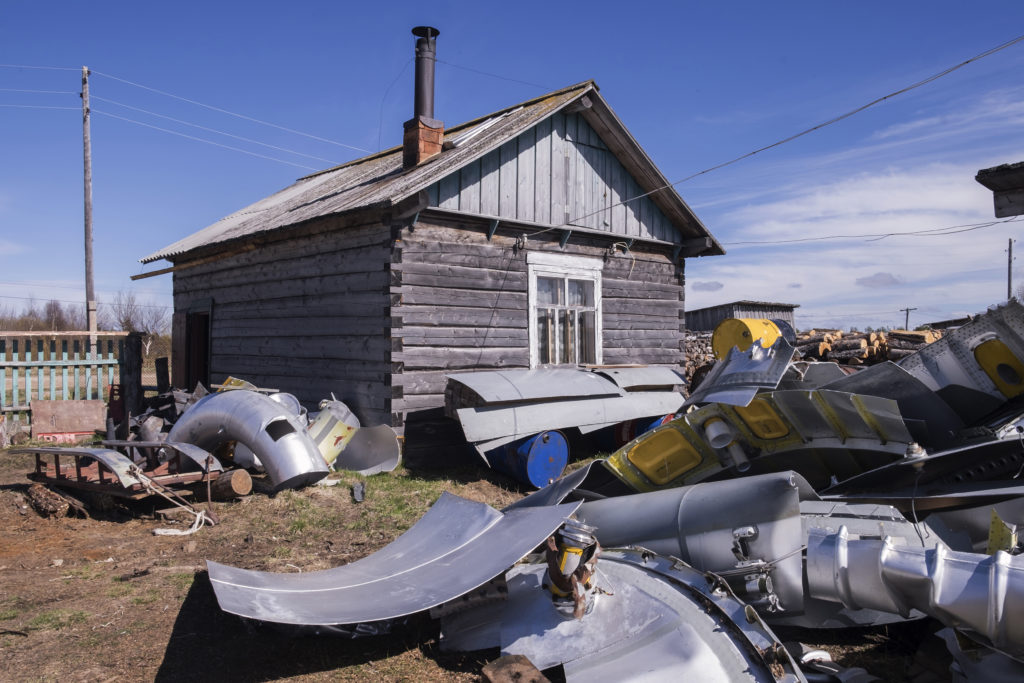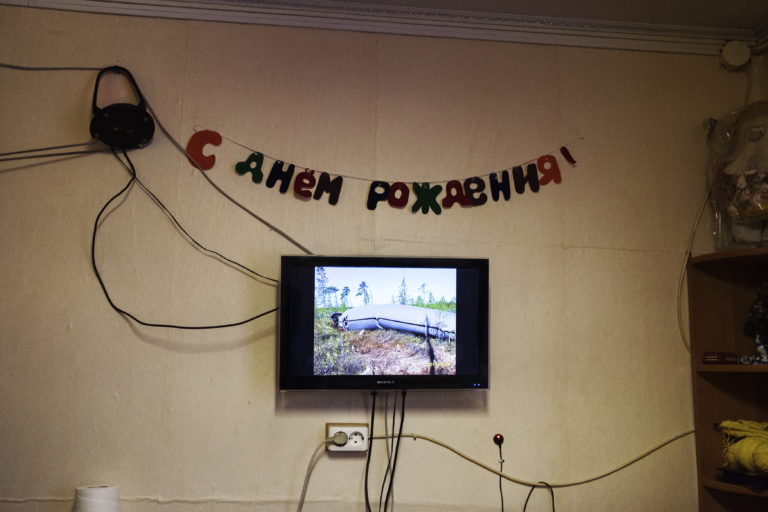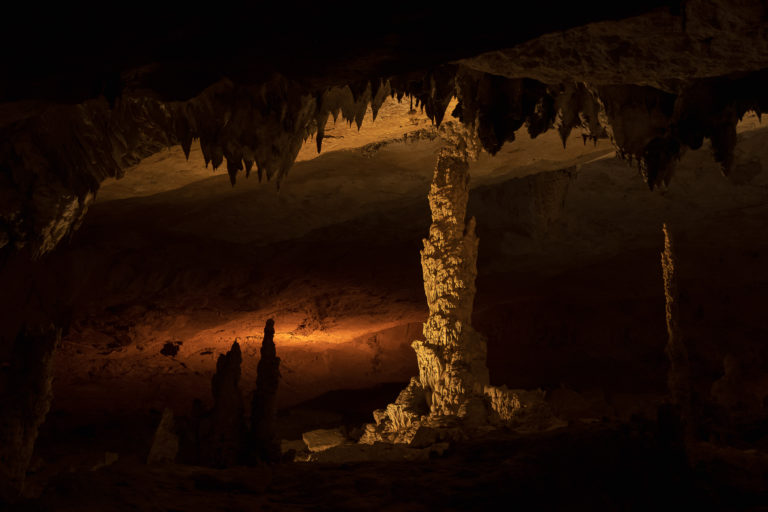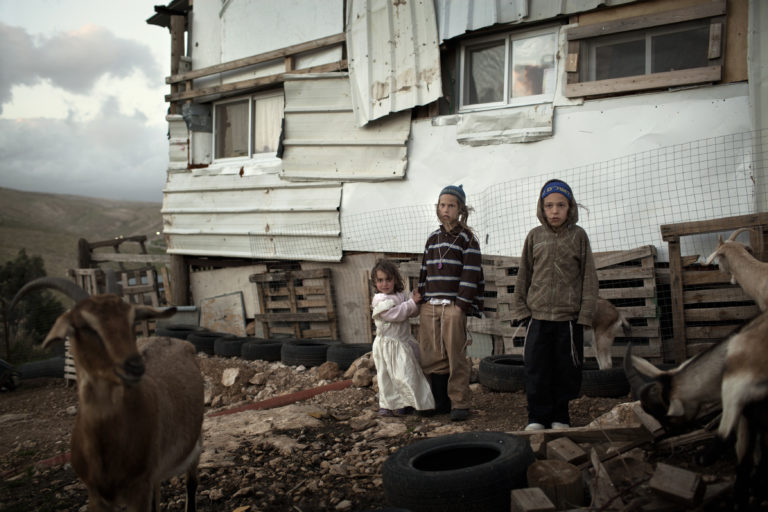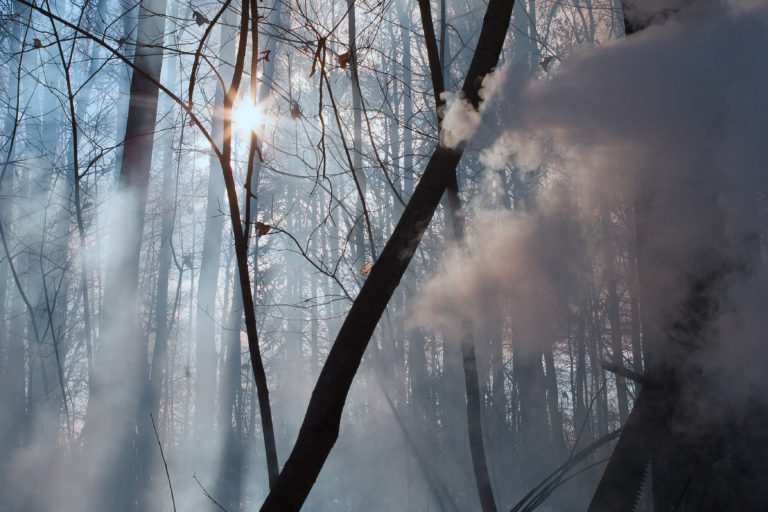Russian’s border security zone in Mezen. 300 km from Arkhangelsk and few from Polar Circle.
In this hostile territory, where environmental and climatic factors make everyday life strenuous, computing errors in the trajectories of satellites from Plesetsk’s Cosmodrome become an unexpected resource. About 1500 km North of the launch base, between forests and tundra, there is a populated area of about ten villages.
Inhabitants, who base their own survival on hunting and fishing, are used to build daily life objects – mostly sledges and boats called “raketa”- with the collected fragments of space rockets, making illegal business of the internal metal components. Recovery operations take place during the winter, in which the river beds freeze and makes roads more easily passable with sleds and cars. Before the collapse of the Soviet Union, the most important space base was Bajkonour, now belonging to the independent Kazakhstan: after the second half of the 90’s, Russia has increased the launches from the Plesetsk base to avoid paying the rent to Kazakhstan. For many years this spaceport was kept secret. Only in 1983 the Cosmodrome was officially mentioned in the national press of the USSR.
From Plesetsk many of the navigation satellites, the weather satellites, and the majority of the military satellites are launched for a wide range of purposes. Since 1997, more than 1,500 launches took off from this site. At launch, each satellite is supported by four propulsion rockets that, disengaging when it reaches orbit, finally fall on earth: according to the official trajectories, fragments should land in the Arctic regions because poorly populated. In many cases, however, they affect the most populated areas in the South.
A highly toxic chemical compound called Unsimmetrical dimethylhydrazine is used as a propellant. According to the local testimonies, several cases of cancer are occurring in the area.
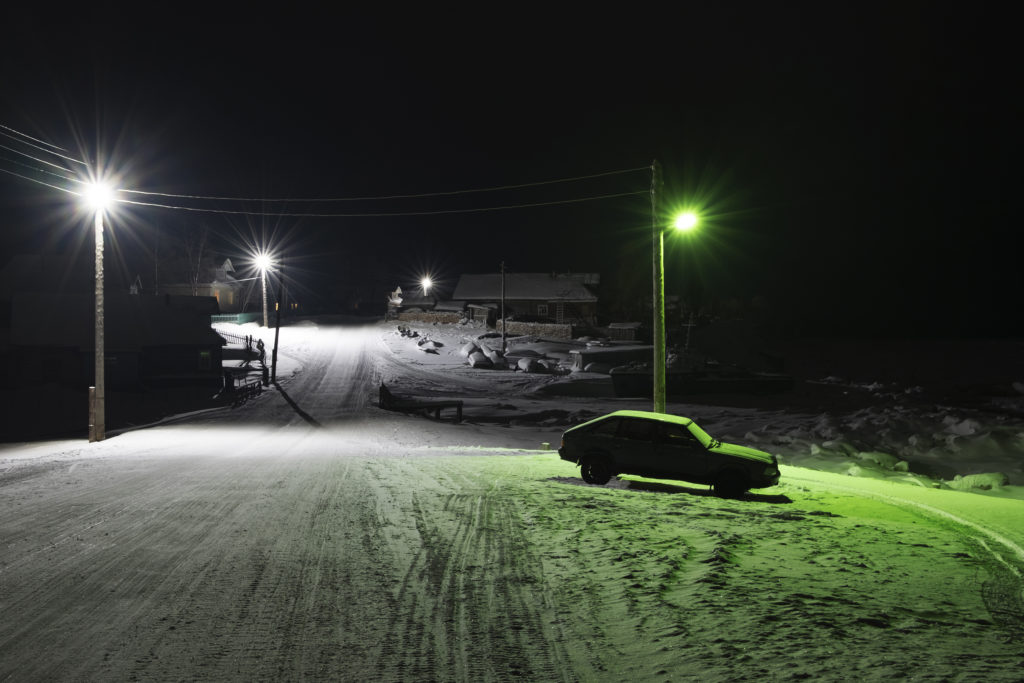
The village of Dolgoshelye is inhabited by 500 people. Access to not residents is prohibited throughout the whole surrounding area. The village stands on the banks of the river Kuloi, just a few kilometers from its mouth in the Barents Sea. this is the village most exposed to the fall of rockets and is in fact the one with the greatest presence of rocket debris and those who recycle the pieces.

Arina Shirokaya, 23. She left the village to go and live in Arkhangelsk. She likes to come back every winter to spend time with her family and relax. She remembered that when she was a child rocket debris was seen as a problem after a little girl playing herself torn her stomach tripping over a piece of metal. Everyone talked about it in the village for a long time but almost nothing was done. A pile of rocket debris was made and left abandoned on the ground. Dolgoshchelye village. Mezen restricted area. Russia. 2018.
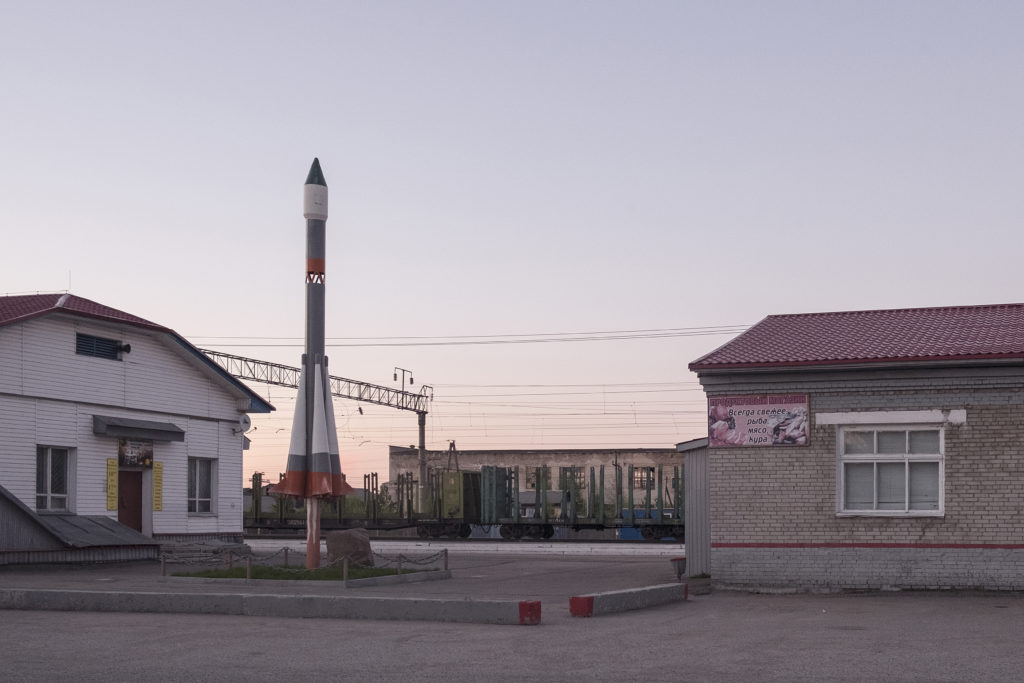
Plesetsk town. The monument of the space port erected at the train station. This railway junction is also crucial for the transport of rocket manufacturing components launched by the Cosmodrome. It is located 4km from the town, 800km from Moscow and about 200km from the capital of Arkhangelsk region.
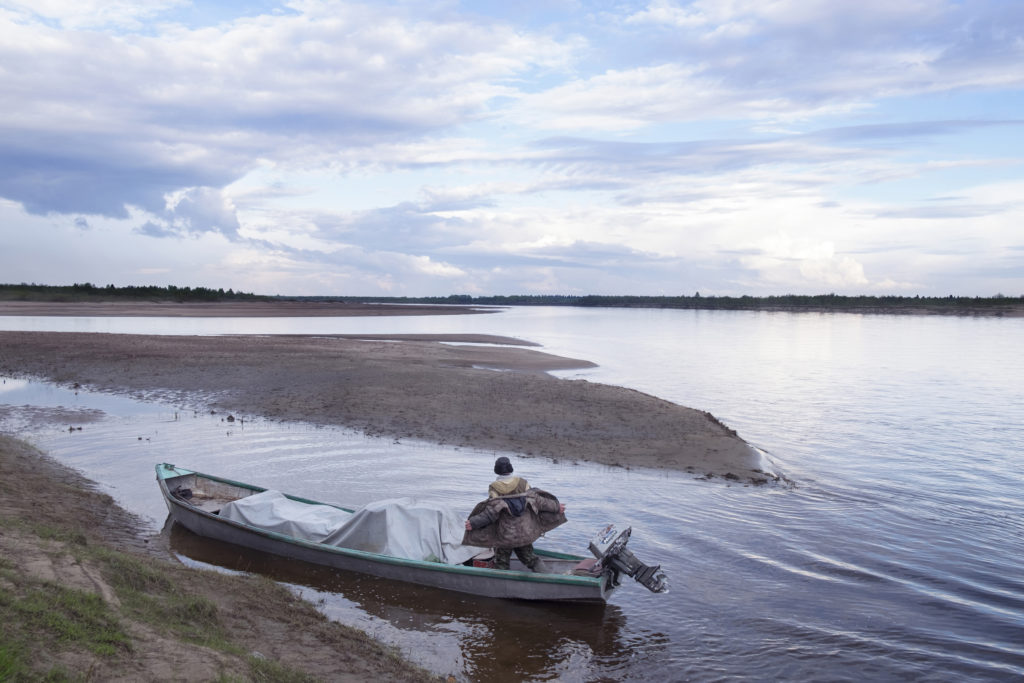
Byechye village. Mezen restricted area. A fisherman on his Rocketa boat has just moored with his sh load. He lives alone in a village of 4 inhabitants, 10 hours of sailing from the village of Bychye. During three days of navigation he reaches the villages on the river to sell his catch and then starts the trip back home.

The last Old Believer of the village He is opposed to the practice of recovering and recycling rockets because of the highly toxic materials they contain and cause tumors. He became a veterinarian during the Soviet time. He was born in the Soviet Union time when their religion was of officially forbidden. He decided to baptize himself a couple of years ago, only after the fall of Soviet Union. The Old Believers are Russian Orthodox Christians that separated themselves from the Orthodox church in the fifteenth century, as a sign of protest against the ecclesiastical reforms introduced by Patriarch Nikon. The Old Believers continue to practice the ancient rituals of the Russian Church prior to the reforms. Bychyie village. Mezen security border zone.

Small internal components of a stage of a rocket covered in gold. According to the collectors' accounts, each rocket contains hundreds of them. Villagers salvage gold components such as these from rockets, melting them down and then selling them by weight in the city of Arkhangelsk. Russian government technically forbids the practice, however, due to the high costs of recovering rockets in the tundra and not in the sea, let this business derived from the recovery of the inhabitants be practiced. Byechye village. Mezen’s security border zone.

Mezen restricted area. Byechye village. Preparations at the house of the bride's parents. In Bychye there is a high percentage of tumors in proportion to the inhabitants, according to the testimonies of some of them. The government provides economic subsidies justifying them with the extreme living conditions of the place.
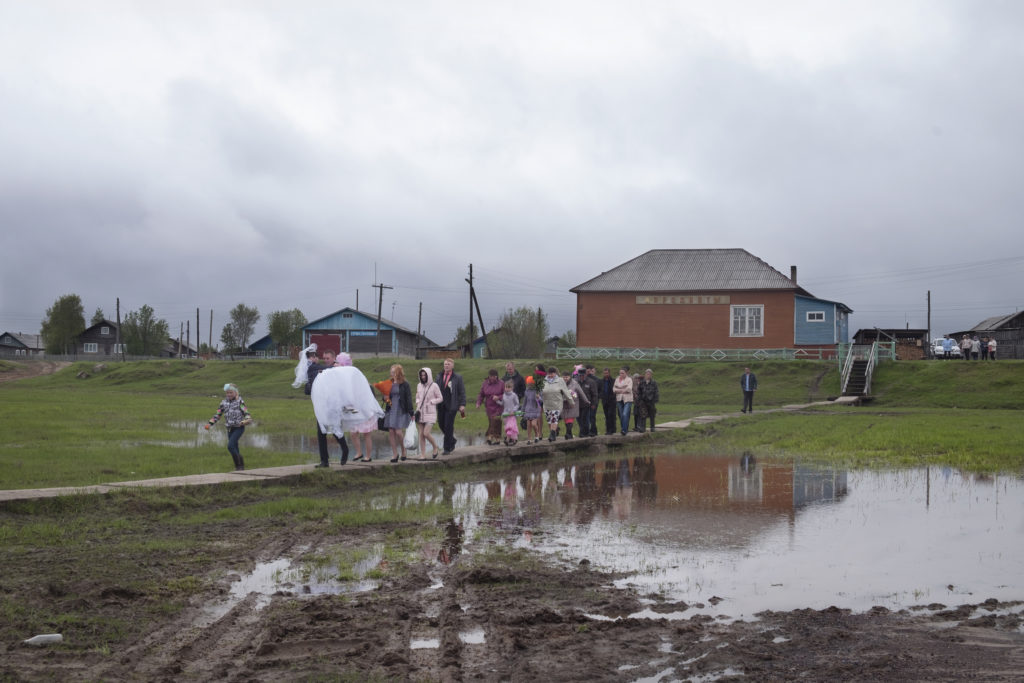
Bychye village. Mezen restricted area. A just married couple and their relatives walk on the path to reach the House of the People where the official wedding ceremony will be celebrated. In Bychye there is a high percentage of tumors in proportion to the inhabitants, according to the testimonies of some of them. The government provides economic subsidies justifying them with the extreme living conditions of the place.
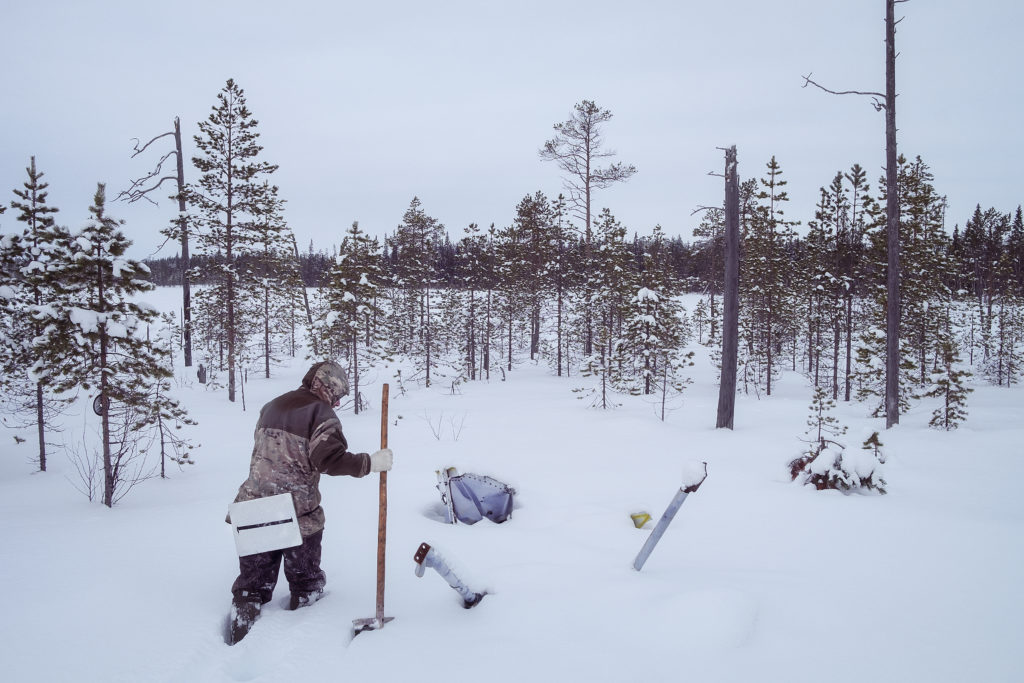
Pavel Popov, 46, is about to dig with his hoe made of rocket debris to recover a rocket covered by snow. He had discovered it in the middle of the tundra last summer after he had seen a trail in the sky and had gone looking. The mud and water present around the rocket did not make it possible to recover it in the summer season. Boreal Forest between Koida and Dolgoshelye.
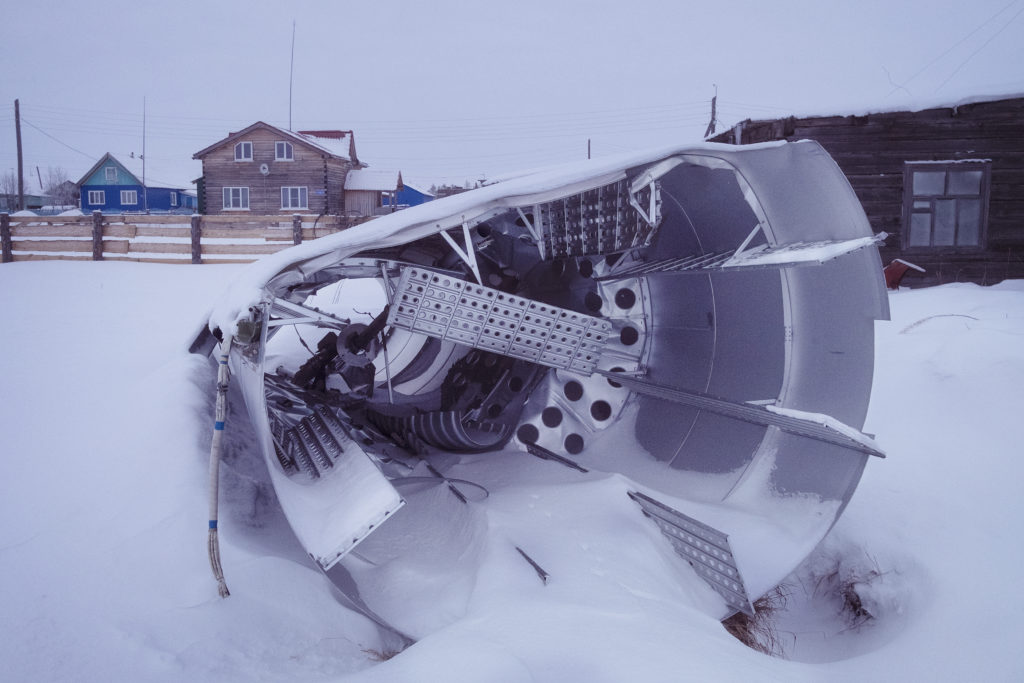
A rocket that has been recovered from an inhabitant of the village in the tundra has been deposited in his backyard. With the external part in dural, he will make a boat to sell. He has removed all the internal parts: energy accumulators in gold, steel and titanium parts. Dolgoschelye village. Mezen security border.

Dolgoshelye village. Restricted area. Lidia Vasilievna. Since her husband, hunter, began to recover rockets, they decided to take a house in the village and no longer live as nomads in the tundra. Her dress has been made by her and is composed by the hair of four different animals: foxes, dogs, squirrels and dears.
